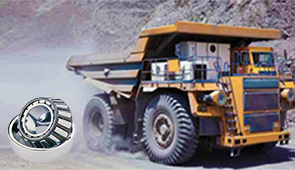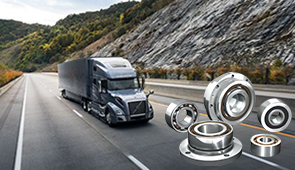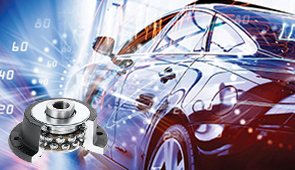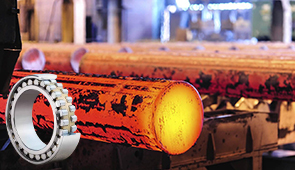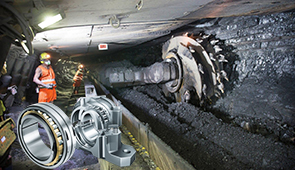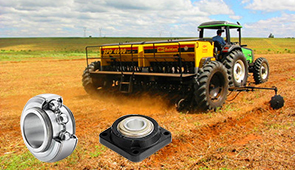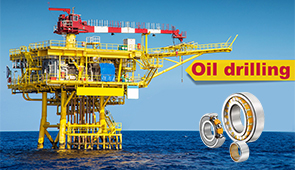Roller vs Ball Bearings: Key Differences and Types of Bearings Explained
Bearings are critical components in mechanical systems, designed to reduce friction and facilitate the smooth transfer of motion between moving parts. Among the various types of bearings, roller bearings, and ball bearings are two of the most commonly used categories, each offering specific designs suited to different applications. This article will provide a detailed exploration of the fundamental differences between roller and ball bearings, their operational principles, and the specific scenarios where each type excels. Additionally, we will discuss the various subtypes within each category, their technical properties, and considerations for selecting the appropriate bearing type for your application. Whether you’re an engineer, technician, or simply curious about the mechanics behind these critical components, this comprehensive guide will help you better understand the role of bearings in modern machinery.
What are the main differences between ball bearings and roller bearings?

How do ball and roller bearings differ in contact area?
Both ball and roller bearings differ depending on the rest area of a part, which directly affects the load capacity. Ball bearings consist of spherical bodies which come in contact with the raceway belt. The mechanism produces minimum friction which makes the ball bearings favorites in applications with high rotational speeds and low loads horizontally. However, because of friction, they are poor withstanding high radial or axial loads.
In contrast, roller bearings have arcame contact as their mechanism of contact. Because of the enlarged contact area, the load bearing capacity, especially for radial loads, increases. There is a trade friction cost which is favored, but for slower rotary speed used in heavy duty applications, the bearing is more suitable.
- Ball Bearings Contact: Point contact; friction is too low; high speed, but lower load.
- Roller Bearings Contact: Line contact; friction is greater; heavy load, slower rate.
These distinctions justify the selection of either type based on specific operational requirements.
What are the key differences in load-bearing capabilities?
The structural configuration and contact mechanics of any bearing type and form greatly define its performance, as stated below:
Ball Bearings:
- Load Type: Primarily serves to carry a radial load and to some extent, axial.
- Load Capacity: Possesses a low load capacity owing to the rolling elements and raceway buffer only being in point contact with each other.
- Applications: electrical motors and precision instruments.
Roller Bearings:
- Load Type: Is capable of carrying both radial and significant axial loads.
- Load Capacity: Superior load capacity due to the bearing having a larger surface area for line contact.
- Applications: conveyor belts, industrial gearboxes, and large machines.
The two types differ in construction and thus function, making it possible for Ball Bearings to operate within high speed accurate demands, whereas Roller bearings are favorable when there are heavy and robust load forces.
What types of ball bearings are commonly used?
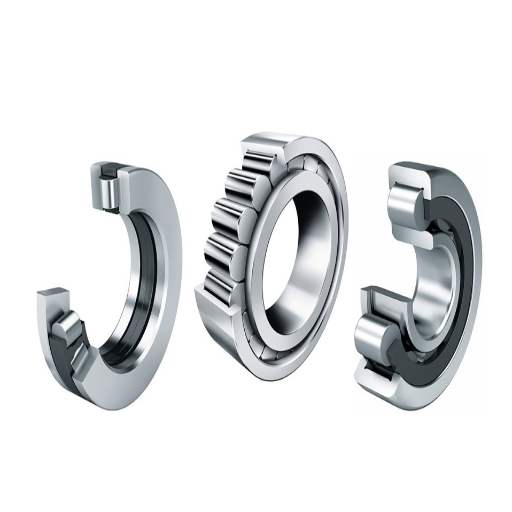
How do angular contact ball bearings work?
Angular contact ball bearings are intended for integrated radial and axial load systems, with optimal performance achieved when a unilateral axial load is applied. The operation of these bearings is based on the oblique angular raceway, which enables the bearing to bear the load force in an inclined manner concerning the bearing shaft named contact angle.
- Contact Angle (α): Varies from 15° to 40°, affecting the bearing’s ability to bear axial load. Greater contact angle means higher axial load capacity, while lower contact angle enables faster rotation.
- Speed Rating: Achieves good rotation speeds due to excellent production and material properties. Restrictions depend on lubricant and clearance but are generally set by the manufacturer.
- Axial Load Capacity: Directly proportional to contact angle; greater contact angles increase the capacity for supporting axial loads.
- Material Composition: Usually made from steel or ceramics to improve strength and for external factors leading to friction during high loads for better wear resistance.
- Preload Configuration: Usually has some screw preloading for eliminating some mechanical gaps and providing better alignment, so improves stiffness and load sharing.
These type of bearings are usually combined or set in groups such as sets arranged back-to-back, face-to-face, or in tandem to manage complicated load directions and guarantee structural integrity for highly accurate applications.
What are the benefits of self-aligning ball bearings?
Self-aligning ball bearings address certain issues prevalent in most mechanics systems with the following noted advantages:
- Autonomous Alignment: These bearings are able to angularly misalign due to shaft deflection or improper mounting, This capability greatly ensures reduction of stress on supporting components and encourages smoother operation.
- Decreased Friction: The spherical shape on the outer race permits rotation to happen at a constant speed regardless of the outer race’s alignment angle, which results in lower energy consumption and heat generation.
- Improved Durability: Self-aligning bearings have a longer service life due to their ability to withstand high temperatures in case of misalignment without too much wear and tear.
- Wide Application Range: In addition to low operational life, these bearings can also have radial alignment and only enable constrained axial movements which makes them a reliable choice for various other mechanics systems like pumps, conveyors, and machines with rotating shafts.
With self-aligning bearings, these systems achieve increased dependability and decrease operational life under harsh conditions.
What are the different types of roller bearings?
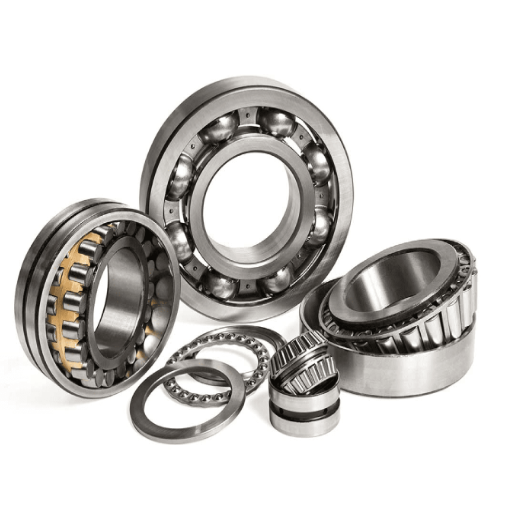
What are cylindrical roller bearings used for?
Cylindrical roller bearings are generally ideal for sustaining high radial loads and are frequently used in places where accuracy and hefty load-bearing requirements are needed. I employ these bearings in several mechanical systems including gear boxes, electric motors, and even turbines because of their ability to sustain high speed operations alongside thermal expansion.
- Radial Load Bearing Capacity: Due to the line contact of the rollers with the raceways, cylindrical roller bearings can bear high radial loads.
- Speed Capability: Their low friction allows them to perform at high speeds efficiently.
- Axial Load Bearing Capacity: While standard designs have trivial axial load capabilities, some variants, like NJ or NUP bearing, have the ability to support axial loads.
- Thermal expansion allowance: For “N” or “NU” type bearings, lacking a flange on one side enables movement of the shaft due to thermal growth without the need to place internal stress.
These features make the cylindrical roller bearings the most desirable for systems that require high levels of reliability and precision while withstanding harsh operational conditions.
How do tapered roller bearings handle combined loads?
Bearings of this type are designed to accommodate combined loading that has both radial and axial components. The rollers are angled to the bearing axis which allows the bearing to capture these forces. The contact angle is the angle between the raceways and rollers and it determines the effectiveness of the bearing in taking axial loads in comparison to radial loads. A steeper contact a ngle increases the capacity of the bearing to take a higher axial load.
- Contact Angle (α): Managed from 10° to 30° as higher angles give the bearing enhanced capability of taking axial loads.
- Dynamic Load Rating (C): The circumferential and axial loads the bearing can take during its lifetime.
- Static Load Rating (C₀): The maximum load that can be achieved when the bearing is stationary or rotating at low speed without suffering physical damage to the bearing.
- Axial-to-Radial Load Ratio: Design envelope bearing set to the ideal are defined contact angle and the loads.
- Lubrication Requirements: Under combined loading lubrication is essential to reduce the level of friction and control the temperature.
These factors guarantee stability and efficiency of tapered roller bearings performance in harsh working conditions encountered in automotive axles, gearboxes, and machinery or tools of significant size and weight.
What are the advantages of spherical roller bearings?
Spherical roller bearings offer significant advantages for specific applications that require enormous loads and misalignment including:
- Bolstered Load-Endurance: Spherical roller bearings sustain simultaneous radial and axial loads, and are designed to maximize load enduring capacity ideal for heavy-duty applications.
- Self-Centering Feature: The external raceway design enables the bearing to accept some degrees of shaft and housing misalignment. Diminishing the chances of failure amongst misaligned systems greatly.
- Ability to Withstand Extreme Environments: These bearings are suitable in harsh environments with shock loads, contamination, or high vibration. Their strong structure allows excellent performance in these scenarios.
- Ability to Withstand Temperature Variations: A sizable number of spherical roller bearings add heat-resilient options, tolerant of temperatures reaching +200°C based on the material and application.
- Friction Created is Low: Enhanced designs and the introduction of lubrication grooves ensures low friction created, this increases component life-span with reduced wear.
Due to these technical aspects, spherical roller bearings are preferred in industries such as mining, material handling, or power generation, which require dependability and endurance.
What are the advantages and disadvantages of ball bearings?
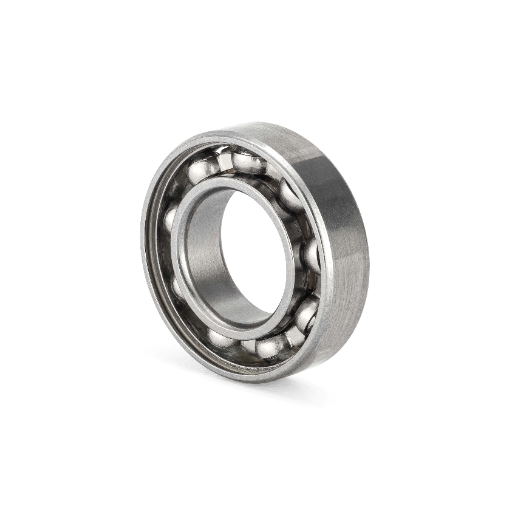
Why are ball bearings preferred for high-speed applications?
For lots of friction with little to no resistance, ball bearings are the preferred selection in the case of high-speed applications due to their ability to retain balance and control in operation. Compared to roller bearings, which translate friction force into resistance, ball bearings allow two surfaces and a rotating feature to touch resulting in point-contact friction which provides ball bearings greater reduction in friction than other bearing types. This feature guarantees easier movement and less resistance even at very high speeds. Unlike other types of bearings, ball bearings can withstand a higher rate of speed while remaining lightweight and producing less heat, which is very critical in set areas where excess heat causes deformity of materials or lubricant breakdown.
- Operating Speed: The quality of materials and type of lubricant can allow specialized high-speed ball bearings to outperform their maximum operational speeds of 1 million dN (speed in RPM multiplied by the bore diameter in mm).
- Friction Coefficient: Thanks to contact points, ball bearings usually provide extremely low friction coefficients of 0.001 to 0.005 which generates further heat retardation in most cases.
- Thermal Management: The introduction of hybrid designs and ceramic type materials have advanced their thermal stability which results to better resistance towards excessive heat build up at higher speeds.
- Dynamic Load Rating: Even with limited overloaded abilities in comparison to roller bearings, ball bearings withstanding high-rate dynamic loads in high speeds are designed to undergo effective control with very little deformity.
- Precision Tolerance: High-speed ball bearings maintain high dimensional tolerances (ISO P4 or P2 grades), which are necessary for stable rotation and vibrational suppression for uses that need extreme precision.
This is why ball bearings are extensively used in aerospace, automobile, and robotic industries where precision and speed are vital.
What are the limitations of ball bearings?
Although ball bearings are useful in various ways, they do come with certain limitations, which include:
- Reduced Load Capacity: When compared to roller bearings, ball bearings have relatively less radial and axial load capacity because of the point contact between the balls and raceways. This makes their application in heavy loads or impact shock loads difficult.
- Sensitivity to Contamination: Ball bearings are much more sensitive to dirt, water, and other external particulates as these can lead to increased friction which leads to more wear of the systems parts. Effective sealing is hence very important for this problem.
- Heat Generation at High Speeds: Excessive sliding friction and lubricant shear may cause ball bearings to generate too much heat at extreme speeds. For example, standard bearing lubricant may be degraded at operating temperatures beyond 120 degrees Celsius or 240 degrees Fahrenheit.
- Tolerance for Misalignment: Ball bearings have limited tolerance for shaft displacement generally in the 0.03 to 0.07 degrees depending on the type and design of the bearing. This allows for uneven load distribution and excessive wear.
- Limitation of Material: Standard steel ball bearings are subject to corrosion in hostile environments, unless coatings or materials that are more protective like stainless steel or ceramics are used. These upgrades however increase the cost.
- Operations with Elevated Noise and Vibration: A rotating ball bearing can generate considerable noise and vibrations at increased RPMs or changing loads, which may pose problems for sensitive applications unless proper engineering noise mitigation techniques and lubrication methods are provided.
All of these constraints point out the need to focus on the selection of a bearing type and operating conditions to achieve the best performance in designated areas.
What are the pros and cons of roller bearings?
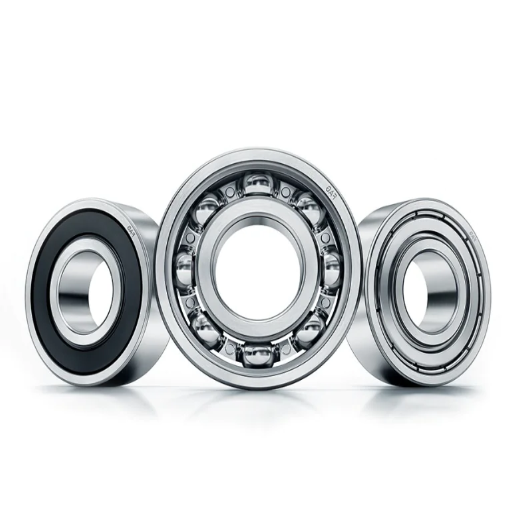
How do roller bearings handle heavy loads?
Bearing the burden of heavy loads is easier for these roller bearings where the point of contact is linear as opposed to being a singularity in the case of ball bearings. The line of contact relieves stress and deformation by distributing the burden throughout a wider surface area. The main aspects that determine the roller bearing’s performance bi include:
- Contact Stress (Hertzian Stress): With roller bearings, the line contact provides reduced stress which permits greater allowance for radial and axial load in the bearing. Stress values for cylindrical roller bearings to ball bearings are much more favorable under certain load scenarios for the bearings. The values of stress in bearings are lower than the ball bearings.
- Load Capacity: The rating of dynamic loads is high particular to roller spherical and tapered bearings rated C. It is noticeable that depending on the material and size of the bearings the load can exceed several hundreds of kilo newtons, (kN) in higher range.
- Material and Heat Treatment: Having high-grade steels and heat treatment improves the abrasion and fatigue resistance wherever it is needed combined with the ability to overload.
- Deflection and Misalignment Handling: Certain designs with heavy spherical roller dust covers tolerate misalignment bearing to the degree of 3° while effectively carrying heavy loads without abrupt wear or failure.
These factors categorize clearly roller bearings to be inertia overloads suitable for large industrial usages such as heavy machinery gearboxes or construction equipment where endurance and distribution of load is vital.
What are the drawbacks of using roller bearings?
Although offering several advantages, roller bearings also come with some disadvantages:
- Considerable losses caused by friction: Roller bearings usually have greater friction because the surface area of rolling elements in contact with the raceways is greater than that of ball bearings. This increases energy loss, especially at higher speeds. The ball bearings friction coefficient will most likely be greater than that of roller bearings and will range from 0.001 and 0.005.
- Disruption of Speed: With roller bearings’ relatively larger mass and contact area, they are not as efficient in high-speed operations. The maximum rotational speed dictated by the limiting speed (n_l) is usually less than that of ball bearings. A cylindrical roller bearing has a reasonable limiting speed of about 10,000 RPM whereas useful ball bearings can have ranges above 20,000 RPM.
- Increased Cost and Complexity: Roller bearings have a greater level of intricacy and often need components produced using special techniques which, in turn, increases the cost. These initial costs are higher than they would be for more simplistic designs like ball bearings, particularly for precise applications.
- Prone to Misalignment: Although spherical roller bearings possess some resistance to their configuration being misaligned, other types like cylindrical or tapered roller bearings are not as forgiving. Inappropriate levels of misalignment can result in wear and tear on the bearings, reducing their lifespan.
Lubrication as with Roller bearings, lubrication must be continuous, proportional, and effective in meeting the standards required for the reduction of friction and tear and wear prevention. Lubrication below the required levels can result in overheating of components and surface damage. Typical operating temperatures for most lubricants are 120–150°C. Carefully considering these boundaries does not provide the flexibility required to satisfy specific application needs along with ensuring that the compromises correspond to the systems or machinery operations and performance requirements.
Frequently Asked Questions (FAQs)
Q: What are the main differences between roller bearings and ball bearings?
A: The main differences between roller bearings and ball bearings lie in their contact area and load-bearing capabilities. Roller bearings have a larger contact area with a line contact, making them better suited for heavy radial loads. Ball bearings, on the other hand, have a point contact and are generally better for higher speeds and combined radial and axial loads. Roller bearings are typically used in applications requiring high load capacity, while ball bearings are preferred for applications requiring high precision and speed.
Q: What are the types of roller bearings?
A: There are several types of roller bearings, including: 1. Cylindrical roller bearings: Ideal for heavy radial loads and high-speed applications 2. Tapered roller bearings: Suitable for combined radial and axial loads 3. Spherical roller bearings: Can handle misalignment and heavy loads 4. Needle roller bearings: Used in applications with limited radial space Each type of roller bearing is designed for specific applications and load conditions.
Q: What are the most common types of ball bearings?
A: The most common types of ball bearings include: 1. Deep groove ball bearings: Versatile and widely used for various applications 2. Angular contact ball bearings: Designed for combined radial and axial loads 3. Self-aligning ball bearings: Can accommodate misalignment 4. Thrust ball bearings: Specifically designed for axial loads These different types of ball bearings cater to various load conditions and application requirements.
Q: What are the advantages and disadvantages of ball bearings?
A: Advantages of ball bearings include their ability to operate at high speeds, low friction, and good performance under combined radial and axial loads. They are also generally more precise and generate less heat during operation. Disadvantages of ball bearings include lower load capacity compared to roller bearings and sensitivity to shock loads. They may also be less suitable for applications with heavy radial loads or those requiring a larger contact area.
Q: How do cylindrical roller bearings differ from other types of roller bearings?
A: Cylindrical roller bearings are characterized by their cylindrical rolling elements, which provide a larger contact area and excellent radial load capacity. They are particularly well-suited for high-speed applications and can handle heavy radial loads. Unlike spherical or tapered roller bearings, cylindrical roller bearings have limited ability to accommodate misalignment or axial loads. They are commonly used in applications such as industrial gearboxes, electric motors, and heavy machinery.
Q: What are the key factors to consider when choosing between ball and roller bearings?
A: When choosing between ball and roller bearings, consider the following factors: 1. Load type and magnitude (radial, axial, or combined) 2. Operating speed requirements 3. Space constraints 4. Precision and accuracy needs 5. Misalignment tolerance 6. Environmental conditions 7. Maintenance requirements 8. Cost considerations By evaluating these factors, you can determine whether ball bearings or roller bearings are more suitable for your specific application.
Q: How do taper roller bearings differ from other types of bearings?
A: Taper roller bearings are unique in their design, featuring tapered rollers that run between tapered inner and outer rings. This configuration allows them to handle both radial and axial loads simultaneously, making them ideal for applications with combined loading. Taper roller bearings can carry higher loads than ball bearings of similar size and are often used in automotive wheel bearings, gearboxes, and heavy machinery. However, they generally have higher friction compared to ball bearings and may require more precise mounting and maintenance.
Q: What are the advantages of using spherical roller bearings?
A: Spherical roller bearings offer several advantages: 1. High load capacity for both radial and axial loads 2. Self-aligning capabilities, allowing them to accommodate misalignment and shaft deflection 3. Suitable for applications with heavy loads and moderate speeds 4. Can handle shock loads and vibrations 5. Ideal for challenging environments with contamination or poor lubrication These features make spherical roller bearings particularly useful in heavy industrial applications, such as mining equipment, paper mills, and steel manufacturing.
UCTH213-40J-300 with Setscrew(inch)
CNSORDERNO: Normal-duty(2)
TOGN: UCTH213-40J-300
SDI: B-R1/8
SD: 2 1/2
UCTH212-39J-300 with Setscrew(inch)
CNSORDERNO: Normal-duty(2)
TOGN: UCTH212-39J-300
SDI: B-R1/8
SD: 2 7/16
UCTH212-38J-300 with Setscrew(inch)
CNSORDERNO: Normal-duty(2)
TOGN: UCTH212-38J-300
SDI: B-R1/8
SD: 2 3/8
UCTH212-36J-300 with Setscrew(inch)
CNSORDERNO: Normal-duty(2)
TOGN: UCTH212-36J-300
SDI: B-R1/8
SD: 2 1/4
UCTH211-35J-300 with Setscrew(inch)
CNSORDERNO: Normal-duty(2)
TOGN: UCTH211-35J-300
SDI: B-R1/8
SD: 2 3/16
UCTH211-34J-300 with Setscrew(inch)
CNSORDERNO: Normal-duty(2)
TOGN: UCTH211-34J-300
SDI: B-R1/8
SD: 2 1/8









